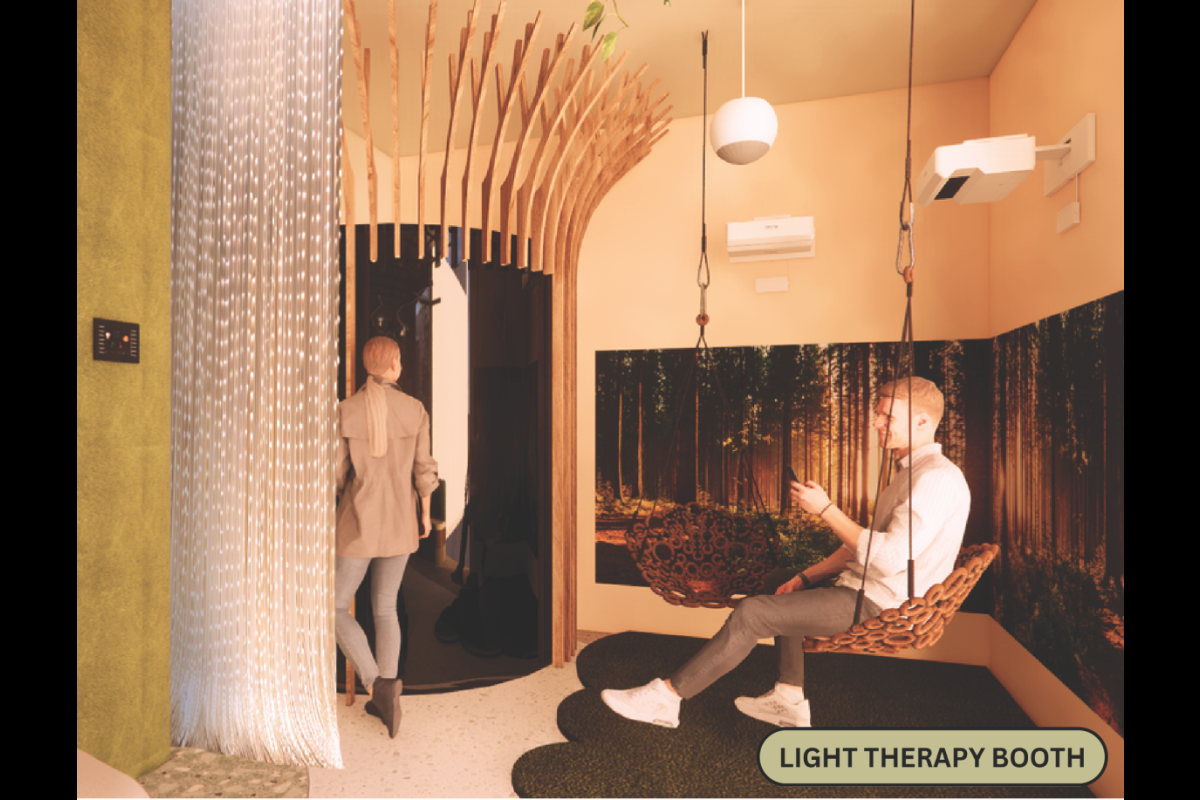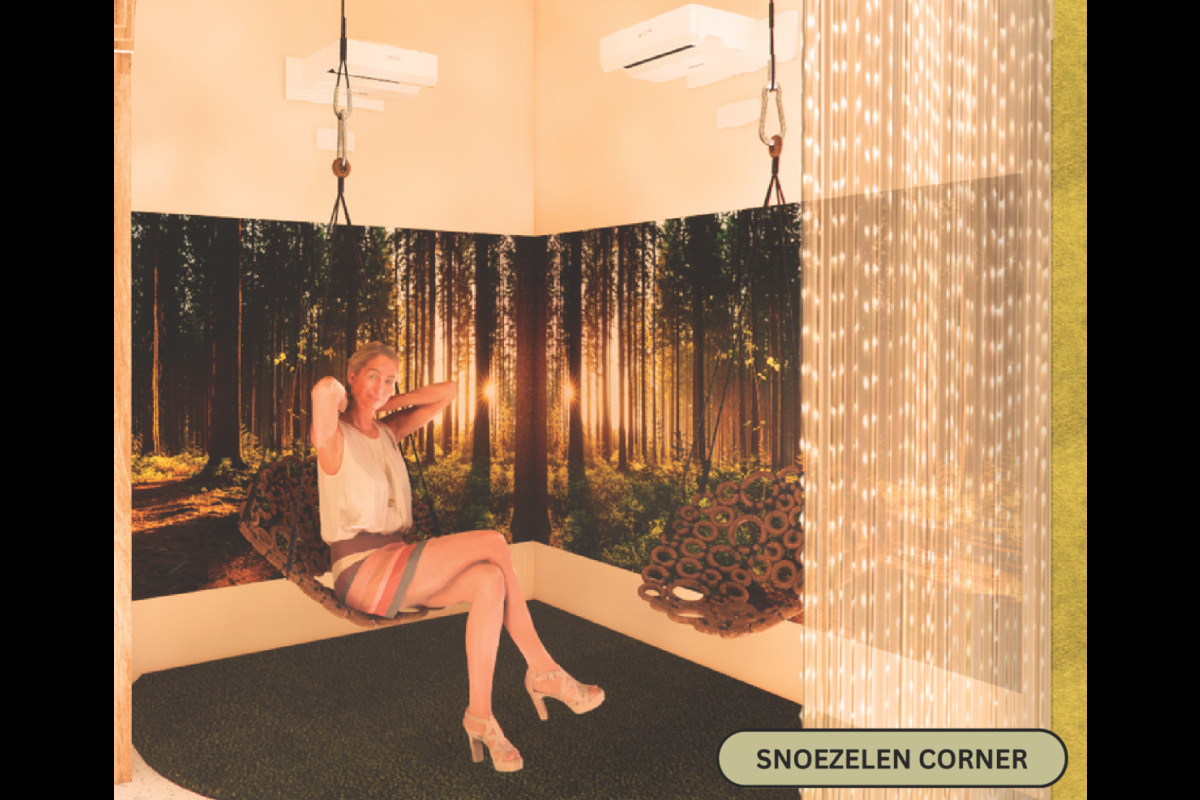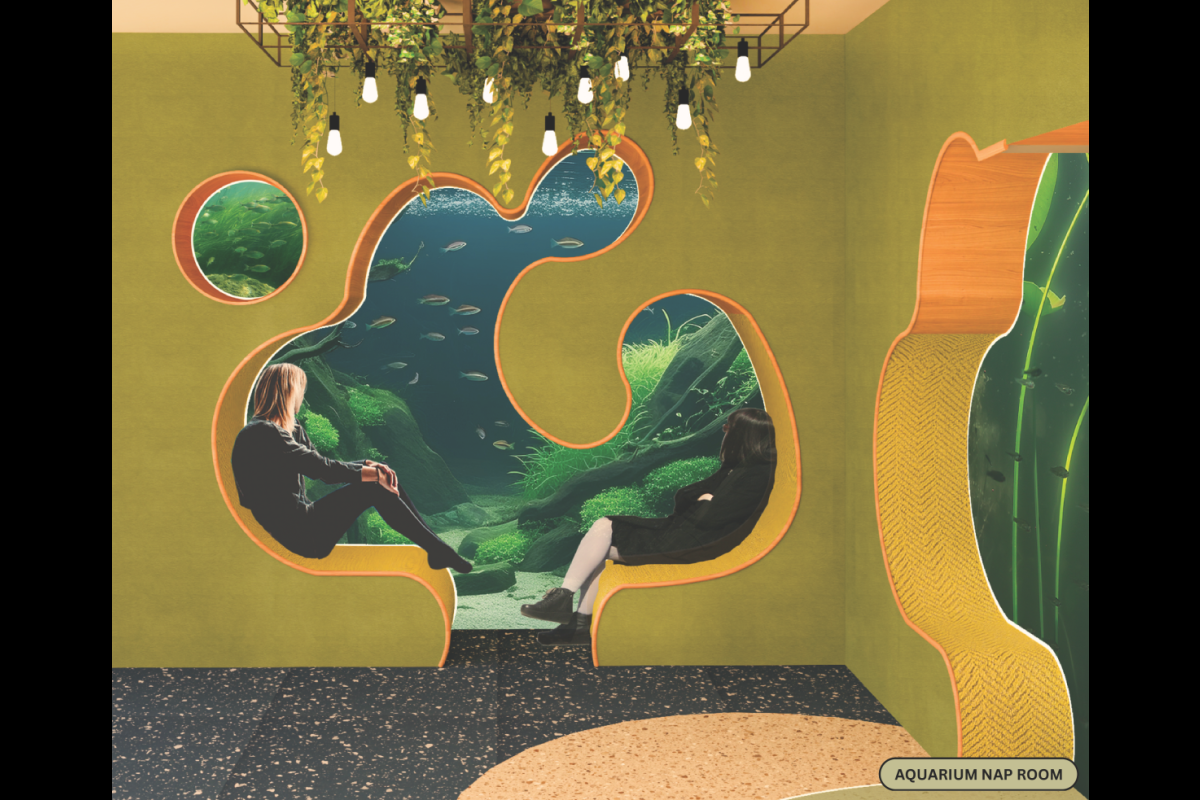The Design School shines at interior design conference

A rendering of a student design of a lounge area, titled "Plein Air." Photo courtesy Chunyao Liu
The Interior Design Educators Council (IDEC) held its annual conference this March in New York City, welcoming interior design leaders who presented research, networked and learned about the latest tools available to practitioners in the field.
Chunyao Liu, assistant professor of interior design in The Design School at Arizona State University, and several of her students were on hand to present their work and received recognitions including best presentation and first place in the student design competition.
Liu has been conducting research that uses furniture advertisements to explore interactions between Eastern and Western design forms in semi-colonial Shanghai during the Republic of China (1912–49). Her research analyzes over 700 historic furniture advertisements from influential Shanghai newspapers, identifying three distinct trends in furniture design.
Titled “Furniture, Advertising, and Decolonization: The Evolution of Furniture Design in Shanghai, China (1912–1949),” Liu’s research provides a deeper understanding of how the Shanghai furniture industry interacted with Western influences, reflecting efforts to negotiate, resist and integrate global cultural influences. It also provides interior designers and scholars with valuable insight into the significance of furniture design as a site for examining cross-cultural interactions, shedding light on the contribution of the furniture industry to the process of decolonization in Shanghai. Liu has been able to complete this work with the help of Erin Cunningham from the University of Florida, who was her co-presenter at the conference, and Lian Liu from Tongji University in Shanghai, making this an international effort.
Liu’s research was selected as one of the top five submissions to the Scholarship of Design and Research (SODR) at the IDEC conference, out of 105 total submissions. Her presentation was awarded the Best Presentation in Scholarship of Design and Research.
In addition to submitting her research, Liu encouraged the students in her design criticism class to submit work to the 2024 IDEC Student Design Competition. Students from the Master of Interior Architecture program took advantage of this incredible opportunity and created design teams. The competition, titled “Mind-Scape,” asked students to work in teams in order to design a place of restoration and respite for college students on campus. Each design team had to work in groups no larger than four and had just two weeks to complete their project.
For the competition, students had to delve into research topics relevant to mental health, wellness and inclusion, define specific user groups, and push the boundaries of a traditional “space.” One of the design teams that submitted their work, consisting of Carrie Dally, Wenjing Wang and Disha Agarwal, focused on creating an environment that promotes well-being among students, especially design students. Drawing inspiration from Japanese forest bathing and using biophilic design, an approach to architecture that seeks to connect building occupants more closely to nature, students created a student lounge titled “Plein Air.” Some of the features of the lounge included circadian lighting, a light therapy booth, a Snoezelen sensory corner, a nap room and freshwater aquariums.
The students said they hope to utilize regenerative design, which examines how buildings and products can be designed to minimize their environmental impact and improve the health of ecosystems, to create a space to allow students to feel inspired, mentally decompress and create a stronger sense of community. Their design won first place in the graduate student category.
“I want to extend my deepest gratitude to Chunyao Liu, our mentor and professor, who set her expectations for us early and pushed us to create something worthy of competing at IDEC,” Dally said. “Our success was also due to the invaluable feedback we received at the midway review point from faculty members at the ASU Herberger Institute for Design and the Arts. Their critiques were instrumental in refining our vision, and I can't thank them enough for taking the time to make our project stronger.
“This is more than a win. It’s a reminder of the power of design to make a difference in the world.”
More Arts, humanities and education

Pen Project helps unlock writing talent for incarcerated writers
It’s a typical Monday afternoon and Lance Graham is on his way to the Arizona State Prison in Goodyear.It’s a familiar scene. Graham has been in prison before.“I feel comfortable in prison because of…

Phoenix civil rights activists highlighted in ASU professor’s latest book
As Phoenix began to grow following WWII, residents from other parts of the country moving to the area often brought with them Jim Crow practices. Racism in the Valley abounded, and one family at…

Happy mistake: Computer error brings ASU Online, on-campus students together to break new ground in research
Every Thursday, a large group of students gathers in the Teotihuacan Research Laboratory (TeoLab) in the basement of the School of Human Evolution and Social Change building on Arizona…





